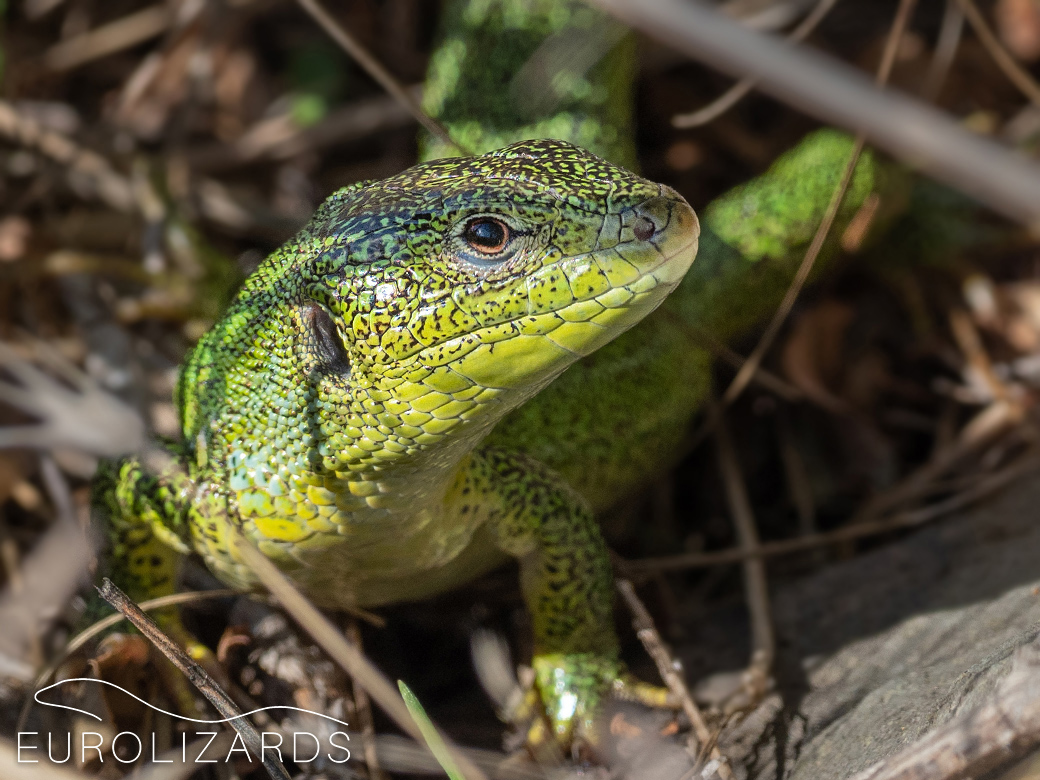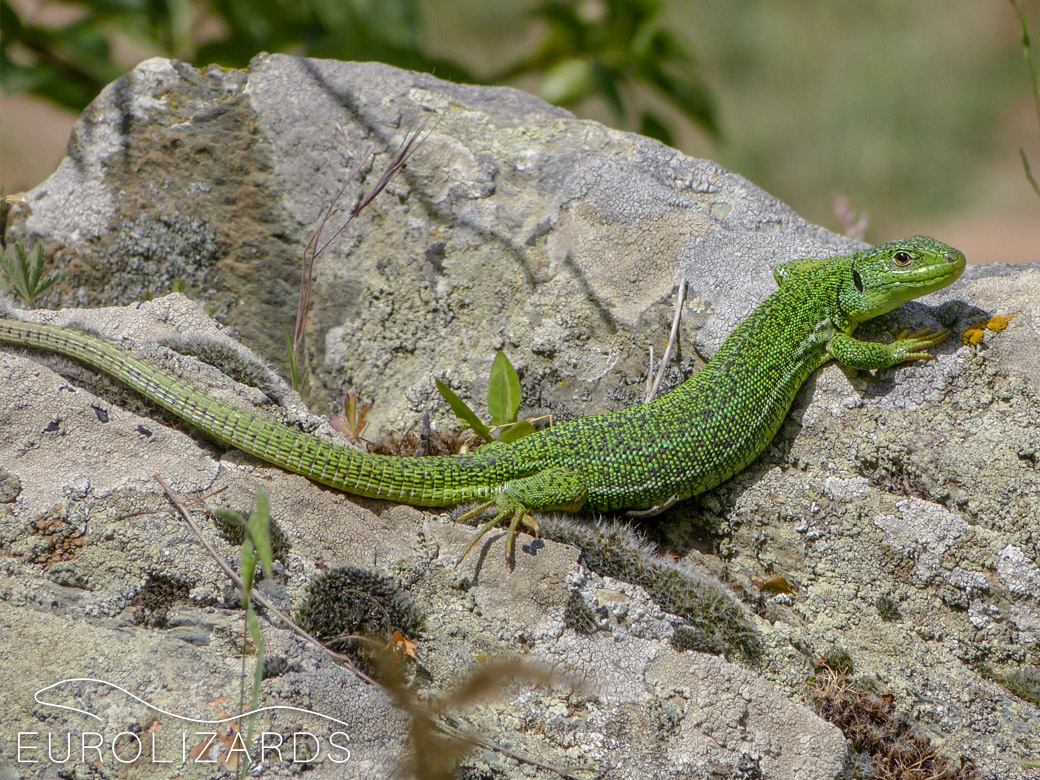Lacerta diplochondrodes - East-Aegean Giant Emerald Lizard

In many cases, the Mid Aegean Trench acts as a natural barrier which seperates species. This also applies for the Balkan Green Lizards: Genetic analysis revealed a big distance between the western and the eastern populations. Hence, the latter ones have been put into species rank in 2019 - Lacerta diplochondrodes. In the area covered by these pages it occurs on the eastern Balkans along the Black Sea coast and some Eastern Aegean islands (see map.). As currently no common name for this species is available, the term "Eastern Balkan Green Lizard" has been put in quotation marks.
These lizards are rather shy and difficult to approach, often hiding in dense vegetation. However, in suitable - not too warm - weather conditions they may be observed basking outside.
Adults show bright green colours with bluish necks. Juveniles are brownish, frequenty with light dorsolateral and vertebral lines. However, there are numerous exceptions: Juveniles without a vertebral line as well as uniform specimen may occur.
Currently, three subspecies are accepted which all look quite similar:
- Subsp. dobrogica - Eastern Balkans from Romania to Thrace
- Subsp. cariensis - Lesbos, Chios and Samos
- Subsp. diplochondrodes - Kos and Rhodes
On the eastern Balkans, Lacerta diplochondrodes may be easily confused with Lacerta viridis, with which it sometimes co-occurs. Adult Lacerta diplochondrodes may have bluish necks but never shows blue heads like Lacerta viridis.
Juveniles of Lacerta trilineata frequently (but not always) show a light vertebral line which lacks in Lacerta viridis.
Note, that the contact zone - if present - with Lacerta trilineata in Greece and Bulgaria is poorly known. Lacerta diplochondrodes dobrogica seems to be significantly smaller than Lacerta trilineata (this may be not very helpful as a field character). Furthermore, Lacerta trilineata in that area seems to lack of blue necks, which frequently occur in Lacerta diplochondrodes.
Juveniles of Lacerta diplochondrodes may be distinguished by the light vertebral line from other small Lacertids (e.g. the genus Podarcis on the eastern Balkans and Anatololacerta on Rhodos and Samos.)






* See: Kornilios P, Thanou E, Lymberakis P, Ilgaz Ç, Kumlutaş Y, Leaché A. A phylogenomic resolution for the taxonomy of Aegean green lizards. Zool Scr. 2019;00:1–14

EUROLIZARDS - The Home of European Lizards! © Birgit & Peter Oefinger

